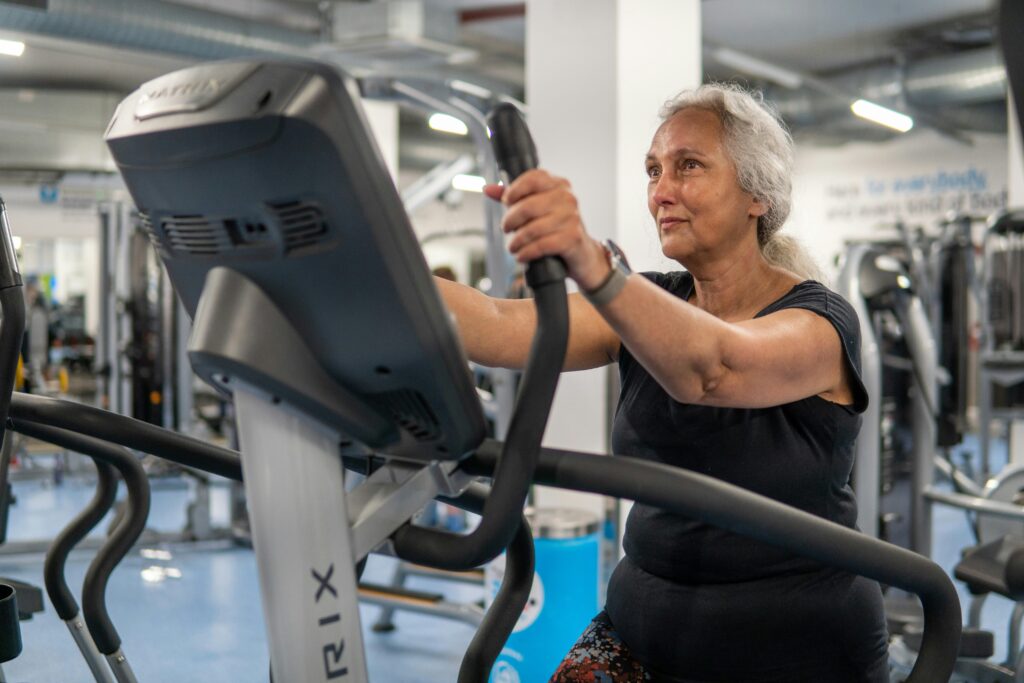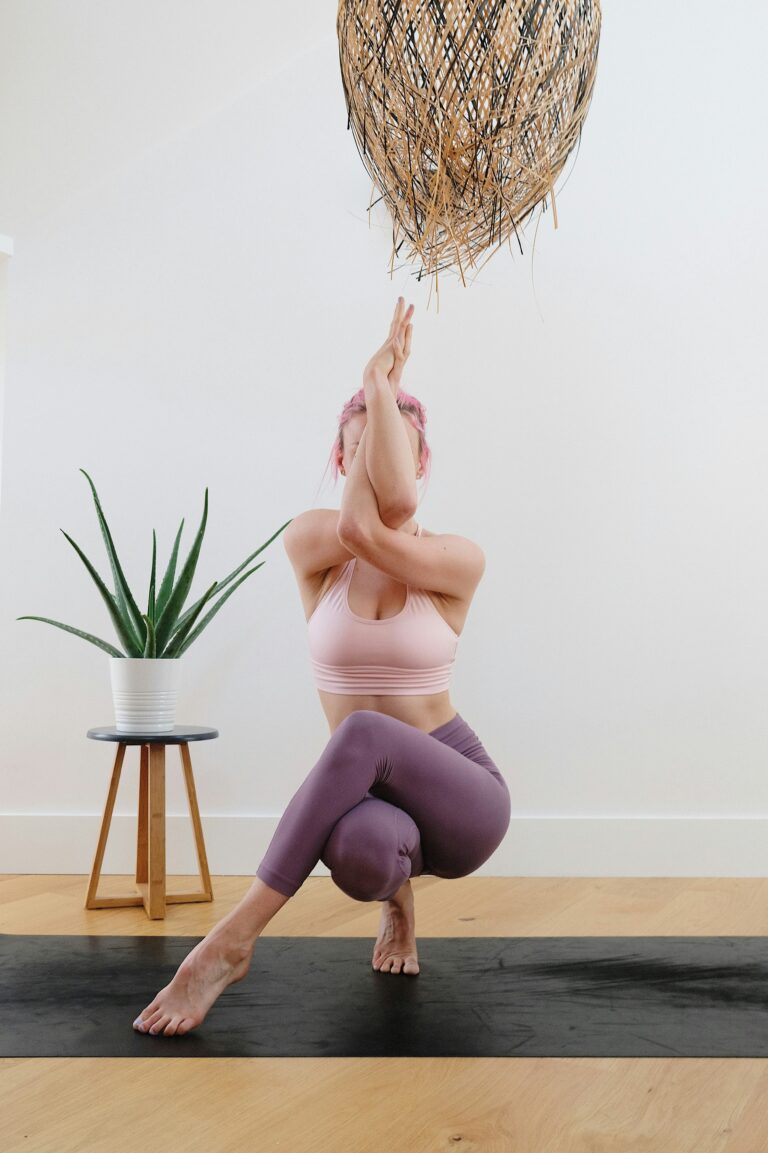
Aging gracefully is an art that requires care, self-love, and dedication. As we grow older, it becomes more essential than ever to take care of our physical wellness. However, the key to maintaining overall health and vitality doesn’t necessarily mean rigorous workout sessions. Welcome to the world of senior wellness, where low-impact fitness routines pave the way for a stronger, healthier version of you.
This post is designed to inspire and guide mature adults towards achieving their fitness goals through gentle, yet effective exercises. We focus on senior-friendly routines that are easy to follow, manageable, and most importantly, safe for aging bodies.
With each year that passes, our bodies undergo changes that can make strenuous exercises more challenging. The good news is, low-impact workouts can be just as effective in maintaining cardiovascular health, improving flexibility, and building strength. They are also perfect for reducing the risk of injury, making them ideal for seniors looking to stay active without putting too much strain on their bodies.
In the upcoming segments, we delve into the world of low-impact exercises that are not only beneficial but enjoyable too. From swimming to yoga, walking to Pilates, we explore a variety of routines that cater to different fitness levels and preferences. These workouts are all about helping seniors live their best lives by promoting health, longevity, and an overall sense of well-being.
So, whether you’re looking to kick-start your fitness journey or searching for ways to spice up your existing routine, this guide offers something for everyone. By the end of it, you will be armed with a wealth of knowledge on how to thrive and stay active with gentle exercises. Remember, it’s never too late to start prioritizing your health and wellness. Let’s embark on this journey towards a healthier, stronger, and happier you!
Understanding Low-Impact Fitness Routines
The term “low-impact” in relation to fitness routines typically refers to exercises that minimize stress on the joints, such as the hips, knees, and ankles. These exercises can be particularly beneficial for seniors, as they help to maintain flexibility, balance, and strength without the risk of injury commonly associated with high-impact workouts.
The beauty of low-impact fitness routines lies in their adaptability. They can be tailored to meet individual needs and capabilities, offering a gentle yet effective means to boost health and overall wellness. A well-structured low-impact fitness routine incorporates both cardiovascular exercises and strength training, targeting various muscle groups without overexerting the body.
Benefits of Low-Impact Fitness Routines
There are several benefits to adopting a low-impact fitness routine, especially for seniors. Firstly, these routines can contribute to improved heart health by increasing cardiovascular endurance. This is due to the fact that they often involve rhythmic, repetitive movements that elevate the heart rate without imposing too much stress on the joints.
Secondly, these routines can help build and maintain muscle mass, which tends to decrease as we age. Strong muscles contribute to better balance, reducing the risk of falls and related injuries. They also support joint health, as the muscles help to absorb some of the impact that would otherwise be placed directly on the joints.
Low-Impact Exercises for a Stronger, Healthier You
Low-impact exercises offer a safe, gentle, and effective way to improve overall health—especially for older adults. These activities reduce strain on the joints and spine, making them ideal for individuals with arthritis, mobility challenges, or those simply seeking a more sustainable fitness routine. Once the foundation of safety and proper technique is established, seniors can confidently integrate low-impact routines into their daily lives to enjoy greater strength, flexibility, balance, and cardiovascular endurance.
These exercises don’t require expensive equipment or high-intensity effort—they simply ask for consistency, proper form, and a willingness to move. Let’s explore a few of the most effective options.
Walking
Walking remains one of the most accessible and adaptable forms of low-impact exercise. Whether done indoors on a treadmill or outside in the fresh air, walking can be tailored to suit all fitness levels and physical conditions.
Benefits:
- Promotes cardiovascular health, helping to reduce blood pressure and improve circulation.
- Enhances bone density and muscle endurance, especially in the lower body.
- Supports mental well-being by reducing anxiety and improving mood through the release of endorphins.
- Encourages social engagement when done with a friend, family member, or walking group.
- Requires no special equipment—just a good pair of comfortable, supportive walking shoes.
Tips for Seniors:
- Start with short walks (5–10 minutes) and gradually increase duration and pace.
- Choose flat, safe walking paths or indoor tracks if balance is a concern.
- Use walking poles or a cane for extra stability if needed.
- Schedule regular walks at the same time each day to build a consistent habit.
Even a brisk 20-minute walk a day can significantly contribute to a healthier heart, stronger legs, and a calmer mind.
Swimming and Water Aerobics
Swimming and water aerobics are standout choices for seniors seeking a low-impact but highly effective way to move. These aquatic activities utilize the natural resistance of water to tone muscles, increase flexibility, and boost heart health—while also offering a cushioned, low-risk environment for those with joint sensitivity or limited mobility.
Benefits:
- Minimizes joint stress due to the buoyancy of water, making it ideal for those with arthritis or recovering from injury.
- Improves muscle tone, core strength, and cardiovascular endurance.
- Encourages full-body movement, engaging arms, legs, and core in a balanced, controlled manner.
- Reduces fall risk, since exercises are performed in a stable, supportive environment.
- Helps regulate body temperature, allowing longer sessions without overheating.
Popular Water-Based Options:
- Lap swimming for those with more experience in the water.
- Water aerobics classes, often offered at community centers or gyms, which combine rhythmic movement with music for fun, structured workouts.
- Aqua yoga or stretching, focusing on flexibility, balance, and calm breathing techniques.
- Water walking or jogging in shallow pools for resistance-based cardio.
Before starting a new water routine, it’s helpful to consult with a fitness instructor or physical therapist who specializes in aquatic exercise. Always ensure pools are well-supervised, heated, and easily accessible.
Yoga
Yoga is a time-tested practice that blends flexibility, balance, strength, and mindfulness into one graceful and low-impact form of exercise. It’s especially well-suited for seniors and beginners, as it can be easily adapted to different fitness levels, physical limitations, and personal goals. Yoga doesn’t just improve the body—it nurtures mental and emotional well-being, offering calmness, clarity, and stress relief through controlled breathing and focused movement.
Physical Benefits:
- Enhances joint flexibility and maintains a healthy range of motion.
- Strengthens core, back, and leg muscles, aiding posture and stability.
- Promotes better balance, reducing the risk of falls and injury.
- Helps improve coordination and spatial awareness.
Mental Benefits:
- Reduces anxiety, depression, and mental fatigue through mindful breathing.
- Encourages relaxation and stress relief by activating the parasympathetic nervous system.
- Fosters a sense of self-awareness, presence, and calm.
Types of Yoga for Low-Impact Fitness:
- Hatha yoga – Gentle and beginner-friendly, focused on basic poses and breathwork.
- Chair yoga – Ideal for seniors with limited mobility or balance concerns; performed seated or using a chair for support.
- Restorative yoga – Uses props and slow movements to deeply relax the body and mind.
Practicing yoga just a few times a week can yield significant improvements in mobility, strength, and emotional resilience. Always use a non-slip mat, and consider taking beginner classes or following online routines guided by certified instructors.
Resistance Band Exercises
Resistance bands are a versatile, affordable, and highly effective tool for strength training—especially in a low-impact fitness setting. These elastic bands come in different levels of tension and can be used to safely engage multiple muscle groups without the need for heavy weights or bulky equipment.
Why Resistance Bands Work:
- Provide progressive resistance, which means the tension increases as the band stretches.
- Allow for controlled movements, reducing the risk of strain or injury.
- Engage stabilizing muscles and promote full range-of-motion training.
- Can be used standing, seated, or lying down, making them accessible for all mobility levels.
Key Benefits for Seniors:
- Maintain or improve muscle mass—crucial for metabolism and mobility.
- Strengthen arms, shoulders, back, hips, and legs with minimal joint stress.
- Improve bone density and reduce fall risk when incorporated regularly.
- Compact and portable, making them ideal for home workouts or travel.
Sample Exercises:
- Seated leg press for lower-body strength
- Bicep curls for arm tone
- Shoulder presses to improve posture
- Lateral leg lifts to target hips and glutes
It’s recommended to start with light resistance and gradually increase as strength builds. Consider consulting a fitness trainer or physical therapist for personalized instruction and to ensure proper form.
Warm-Up and Cool-Down
Warming up and cooling down are often overlooked but are critical components of any effective workout, especially in low-impact fitness programs where control, mobility, and joint care are emphasized.

Benefits of a Proper Warm-Up:
- Increases heart rate gradually, preparing the cardiovascular system for physical activity.
- Boosts circulation, ensuring that muscles receive oxygen-rich blood before being engaged.
- Loosens joints and muscles, improving flexibility and reducing stiffness.
- Enhances mental focus, helping you transition from rest to movement with awareness.
Typical warm-up activities might include light cardio (like marching in place or brisk walking), arm circles, leg swings, and dynamic stretching.
Benefits of a Proper Cool-Down:
- Helps lower the heart rate gradually, avoiding sudden drops in blood pressure or dizziness.
- Prevents lactic acid buildup, which can reduce soreness the following day.
- Encourages mindful breathing, promoting relaxation and recovery.
- Supports flexibility through static stretching when the muscles are warm and pliable.
Taking 5–10 minutes for each phase can enhance performance and reduce injury risk, making it an indispensable part of your fitness strategy.
Proper Form and Technique
One of the most important aspects of an effective workout is using proper form and technique. Performing exercises incorrectly not only diminishes the benefits of the movement but can also lead to overuse injuries, muscle imbalances, and joint strain—even in low-impact routines.
Why Proper Form Matters:
- Ensures targeted muscles are engaged correctly.
- Prevents compensation by other muscle groups that can lead to injury.
- Promotes long-term joint and spine health.
- Improves efficiency, helping you achieve better results in less time.
Whether you’re practicing bodyweight exercises, resistance training, yoga, or Pilates, it’s worth taking the time to learn each movement thoroughly.
How to Maintain Good Form:
- Start slowly, focusing on quality over quantity.
- Use a mirror or record yourself to assess alignment and posture.
- Listen to your body—pain is a signal, not a challenge.
- Breathe properly, coordinating breath with movement for stability and endurance.
- Seek professional guidance, especially when learning new movements. A certified fitness instructor or physical therapist can offer personalized corrections and modifications.
Over time, proper technique becomes second nature, allowing you to build confidence, minimize setbacks, and progress safely in your fitness goals.
Consistency
Consistency is key when it comes to fitness. A regular routine of low-impact exercises can contribute to long-term health benefits.
Incorporating Low-Impact Fitness Routines into Daily Life
One of the challenges many seniors face when it comes to maintaining a regular fitness routine is finding ways to incorporate exercise into their daily lives. Here are a few suggestions:
- Make it social: Participate in group exercise classes or walk with a friend or family member. Social interactions can make exercising more enjoyable.
- Break it up: If a full workout seems daunting, try breaking it up into smaller, more manageable segments throughout the day.
- Make it fun: Choose activities that you enjoy. If you love nature, consider walking in a park or botanical garden. If you enjoy music, try a dance class or water aerobics.
Remember, it’s never too late to start a fitness routine. With a consistent and well-structured low-impact fitness routine, seniors can boost their strength, improve their health, and enjoy a better quality of life.
Conclusion
In conclusion, senior wellness is crucial for maintaining a stronger and healthier lifestyle. Through engaging in low-impact fitness routines, seniors can improve their strength, flexibility, and overall health while reducing the risk of injury. Activities such as walking, swimming, yoga, and tai chi not only provide physical benefits, but also promote mental wellbeing, combating feelings of isolation and depression.
It’s essential to note that the key to success is consistency and finding a routine that is enjoyable and sustainable. It’s not about pushing yourself to the limit, but rather, embracing an active lifestyle that enhances quality of life. Moreover, it’s recommended that seniors seek professional advice before starting any new fitness routine to ensure it aligns with their individual health conditions.
With gentle exercises, seniors can stay active, thrive, and live their best lives. Remember, it’s never too late to start, and every step counts towards a healthier you. Senior wellness is not just about longevity, but the quality of life. So, start your journey towards a stronger and healthier you today!
Remember, physical activity is the cornerstone of a healthy lifestyle for people of all ages, especially seniors. Make fitness a priority, and reap the lifelong benefits. Don’t just exist, thrive!



